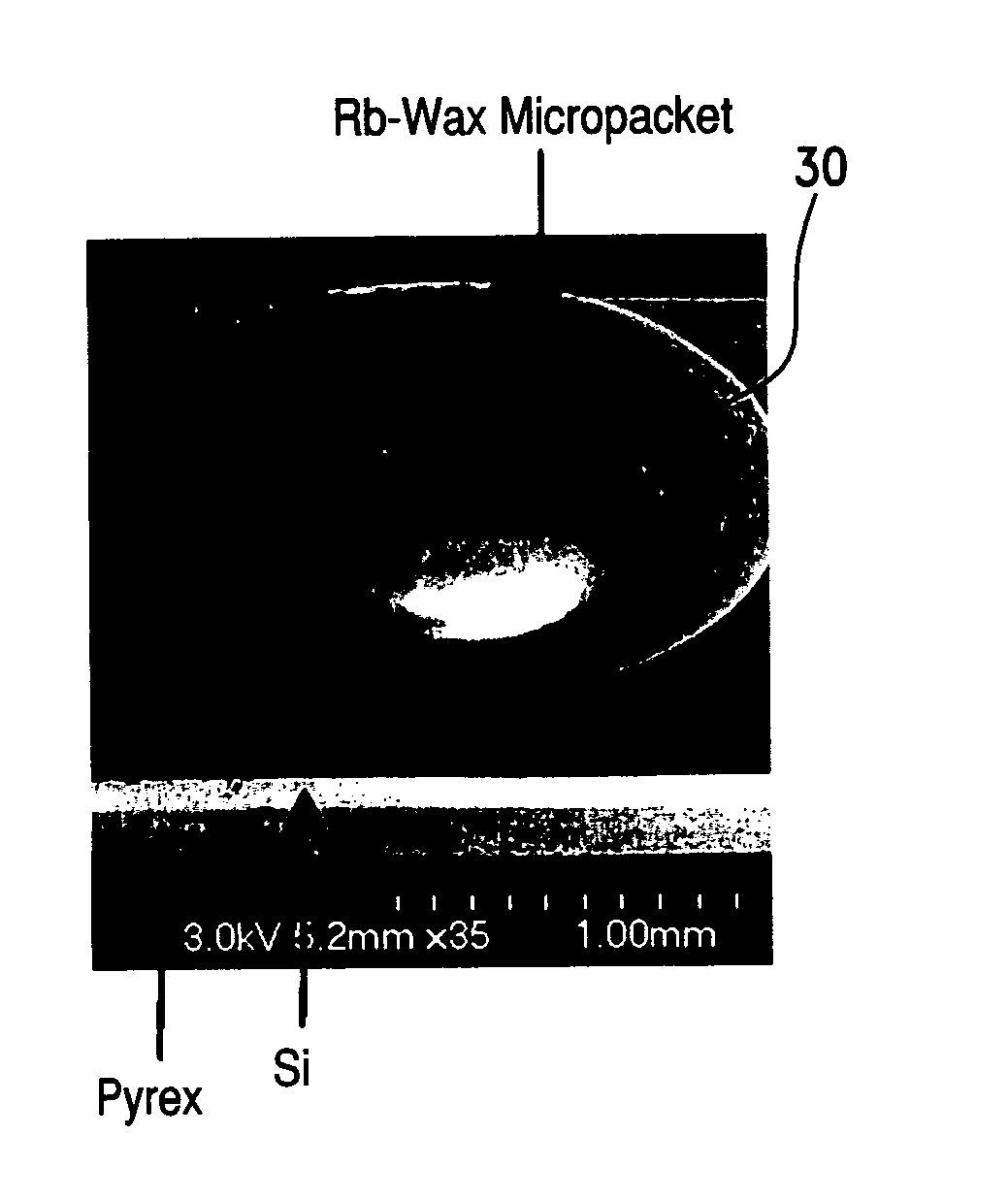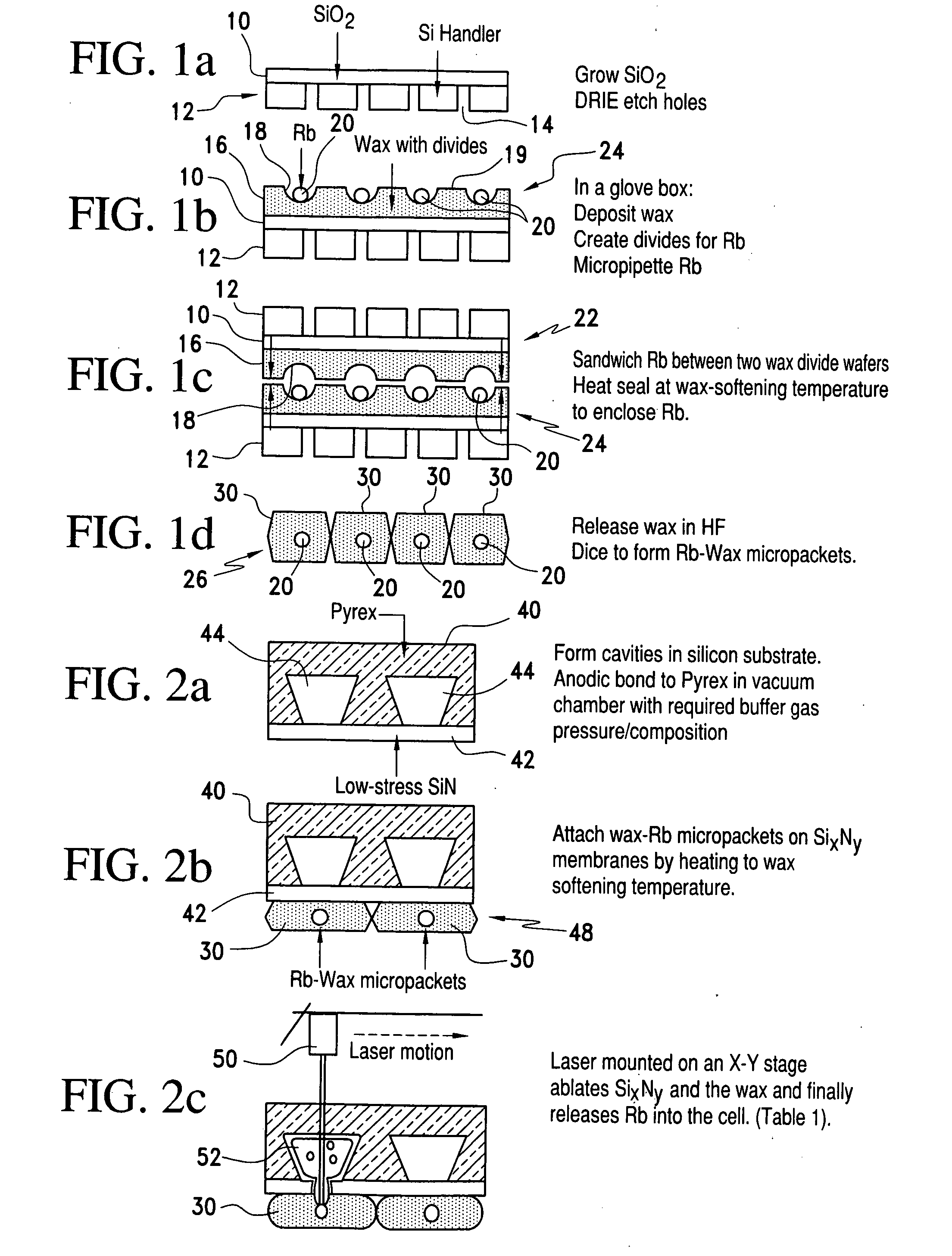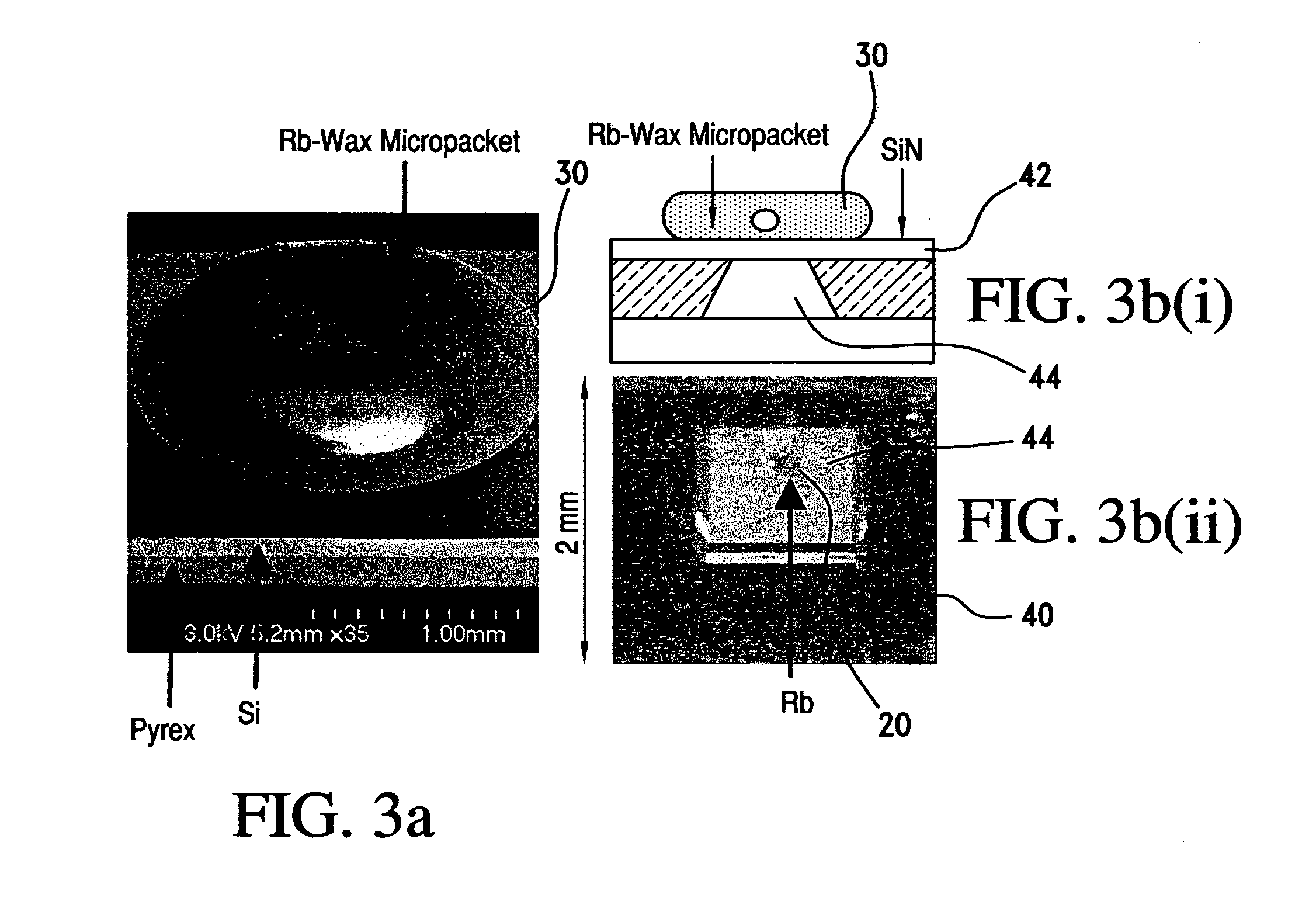Alkali metal-wax micropackets for alkali metal handling
- Summary
- Abstract
- Description
- Claims
- Application Information
AI Technical Summary
Benefits of technology
Problems solved by technology
Method used
Image
Examples
Embodiment Construction
[0047] Turning now to a more detailed description of the invention, the process for Alkali-Metal Wax Micropacket Fabrication, Figs 1a-1d schematically outline the sequence of process steps to form alkali metal wax micropackets.
[0048] Referring to FIG. 1a, a 1 μm thick layer of silicon dioxide (SiO2) 10 is deposited on a 4-inch silicon wafer 12 used as a handle substrate. Through-wafer holes 14 are etched through handle substrate 12 using deep reactive ion etching (DRIE) on the back side to serve as etch holes for the release process.
[0049] A thin uniform layer of wax 16 is deposited on top of the SiO2 layer 10 in the following way. The handling wafer 12 is placed on a hotplate with a level surface inside a nitrogen ambience glove box with low levels of oxygen and humidity within a few part per million. A measured amount of solid wax 16 is placed on the wafer 12, melted and spread using a microscope glass slide. The wafer is held above the melting point for a few minutes and rapidl...
PUM
| Property | Measurement | Unit |
|---|---|---|
| Temperature | aaaaa | aaaaa |
| Temperature | aaaaa | aaaaa |
| Volume | aaaaa | aaaaa |
Abstract
Description
Claims
Application Information
 Login to View More
Login to View More - R&D
- Intellectual Property
- Life Sciences
- Materials
- Tech Scout
- Unparalleled Data Quality
- Higher Quality Content
- 60% Fewer Hallucinations
Browse by: Latest US Patents, China's latest patents, Technical Efficacy Thesaurus, Application Domain, Technology Topic, Popular Technical Reports.
© 2025 PatSnap. All rights reserved.Legal|Privacy policy|Modern Slavery Act Transparency Statement|Sitemap|About US| Contact US: help@patsnap.com



